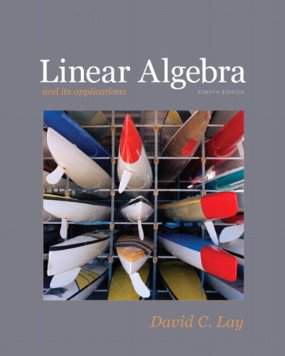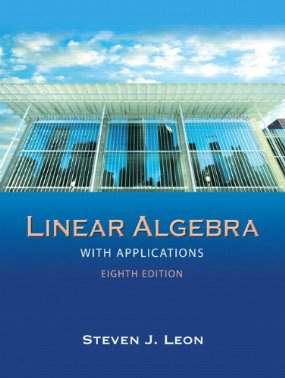Connecting...

This is a quick preview of the lesson. For full access, please Log In or Sign up.
For more information, please see full course syllabus of Linear Algebra
For more information, please see full course syllabus of Linear Algebra
Linear Algebra Change of Basis & Transition Matrices
Lecture Description
We’ve learned about bases and transforming a matrix, but now it’s time to combine those topics in a way that gives us a whole new basis to work with. As you know, the basis is one of the most important properties of a vector space (it’s like the determinant to a matrix). Much like the analogous matrix, you can alter a basis to better suit the problem you’re dealing with. The way to do this is through the transition matrix, as the professor will show in this video. After this we’ll show you an application of a basis change.
Bookmark & Share
Embed
Share this knowledge with your friends!
Copy & Paste this embed code into your website’s HTML
Please ensure that your website editor is in text mode when you paste the code.(In Wordpress, the mode button is on the top right corner.)
×
Since this lesson is not free, only the preview will appear on your website.
- - Allow users to view the embedded video in full-size.
Next Lecture
Previous Lecture










































 Answer Engine
Answer Engine




1 answer
Wed Jan 27, 2016 4:15 PM
Post by Hen McGibbons on January 16, 2016
where did you learn how to teach? i am a new tutor and I am trying to help my students as much as possible. do you follow the principles of any books or mentors? or did you develop your own teaching style?
1 answer
Sun Dec 7, 2014 6:45 PM
Post by Nkosi Melville on December 4, 2014
for example if i am trying to find a transition matrix corresponding to a change of basis from the standard
basis {e1, e2} to the ordered basis {u1, u2}
Would the vectors u1 and u2 be the matrix i turn into reduced row echelon form?
1 answer
Mon Apr 15, 2013 11:36 PM
Post by Matt C on April 14, 2013
At the end when you confirm problem the identity matrix is correct, but I think you wrote the identity matrix wrong at the 31:50 mark.
At the 31:50 mark, doesn't the right side have to be equal to the identity matrix ([1,0,0], [0,1,0], [0,0,1]) you have ([1,0,0], [0,1,0], [1, 0,0]). I wrote them as columns.